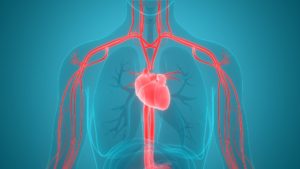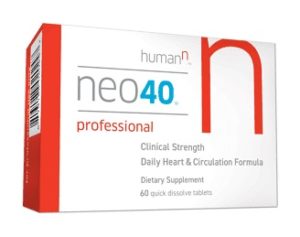The Miracle Molecule
Author: Michael (Mike) Shaw, PA-C, ABAAHP
The chemical properties of Nitric Oxide were first characterized in 1772. Ferid Murad first described nitric oxide as a vasodilator and elucidated the mechanism of action of organic nitrates such as nitroglycerin in 1977. In 1980 Robert Furchgott discovered that our endothelial cells make a vasodilator substance. He termed his discovery Endothelial Derived Relaxing Factor EDRF. Then in 1987 both Salvador Moncada and Louis Ignarro discovered that EDRF described by Furchgott is Nitric Oxide. It was named Molecule of the year in 1992 and these 3 scientists were awarded the Noble Prize in Physiology and Medicine in 1998.
 Nitric Oxide (N-O) is a gas composed of one atom of nitrogen bonded to one atom of oxygen. It serves as a critical signaling molecule in the cardiovascular and circulatory systems. As such, it affects absolutely every function in our bodies. It is the foundational core. Without circulation, none of our body’s organ systems can work as intended. As a permeable gas, Nitric Oxide can pass through the endothelial lining into the vascular smooth muscle of the arterial wall, relaxing and dilating the artery, improving blood flow, lowering blood pressure, and enhancing perfusion of all tissues and organ systems of the body. Perfusion provides oxygen, nutrients, and removal of toxins.
Nitric Oxide (N-O) is a gas composed of one atom of nitrogen bonded to one atom of oxygen. It serves as a critical signaling molecule in the cardiovascular and circulatory systems. As such, it affects absolutely every function in our bodies. It is the foundational core. Without circulation, none of our body’s organ systems can work as intended. As a permeable gas, Nitric Oxide can pass through the endothelial lining into the vascular smooth muscle of the arterial wall, relaxing and dilating the artery, improving blood flow, lowering blood pressure, and enhancing perfusion of all tissues and organ systems of the body. Perfusion provides oxygen, nutrients, and removal of toxins.
Another NO critical function is the delivery of oxygen off of hemoglobin in the microcirculation. When oxygen-rich blood is circulated from the lungs to the periphery, the oxygen is bound to the iron center of hemoglobin. It is nitric oxide that tells the hemoglobin to release oxygen during the arterial/venous transit. Without nitric oxide, hemoglobin cannot release oxygen and without oxygen, cells become dysfunctional and eventually die.
Nitric Oxide levels decline with physiological aging. On average men by age 40 have about 50% of the Nitric oxide they had in their 20’s and women by age 50 have about 35% of the Nitric Oxide they had in their 30’s.
There are two pathways of Nitric Oxide production in the body. The first is an enzymatic reaction using L-arginine and the enzyme Nitric Oxide Synthase NOS. This enzyme is found throughout  the body but primarily in the cells that line all blood vessels. L-arginine is a semi-essential amino acid, meaning that your body makes it through normal metabolism in the urea cycle and is also found in many proteins we eat. Unless you have an extremely rare inborn error in metabolism, your body will always make enough L-arginine to produce NO. For this pathway to work NOS must be active and functional. The older we get the less nitric oxide we make through L-arginine. This is because NOS becomes dysfunctional and no longer converts L-arginine to nitric oxide. This is called endothelial dysfunction. Regular daily exercise has been shown to enhance and maintain better levels of NOS with aging.
the body but primarily in the cells that line all blood vessels. L-arginine is a semi-essential amino acid, meaning that your body makes it through normal metabolism in the urea cycle and is also found in many proteins we eat. Unless you have an extremely rare inborn error in metabolism, your body will always make enough L-arginine to produce NO. For this pathway to work NOS must be active and functional. The older we get the less nitric oxide we make through L-arginine. This is because NOS becomes dysfunctional and no longer converts L-arginine to nitric oxide. This is called endothelial dysfunction. Regular daily exercise has been shown to enhance and maintain better levels of NOS with aging.
The second pathway is through the metabolism of inorganic nitrate found in green leafy vegetables like spinach, arugula, kale, cabbage, and some root vegetables like beets which are an excellent source of nitrates. Nitrate is absorbed in the gut and concentrated in our salivary glands. There are nitrate-reducing bacteria that live in the crypts of our tongue that convert nitrate to nitrite and nitric oxide. Our saliva then becomes high in nitrite and when we swallow our saliva, we get nitric oxide produced in the lumen of the stomach provided there is stomach acid. For this pathway to work, you must consume sufficient nitrate from your diet (300-400mg), must have the right oral bacteria and sufficient stomach acid production! Unfortunately, the typical American diet only contains 150 mg of nitrate a day. We need at least 300 mg of nitrate per serving to lead to any appreciable production of nitric oxide, providing the individual has the right oral bacteria and stomach acid production. Unfortunately, over 200 million Americans use an antiseptic mouthwash every morning and over 100 million scripts are written every year for proton pump inhibitors and even more for antacid products, now available over the counter. Collectively the majority of Americans become nitric oxide deficient based on their diet and hygienic practices.
When I started researching the hundreds of companies that produce nitric oxide products, the goal was to find a company that produces a product that works. Most of these companies do not invest in clinical research nor do they conduct clinical trials. I decided on a company that to date has conducted 11 clinical trials using a randomized, double-blinded, and placebo-controlled methodology. The company, Human N, has a proprietary product Neo40 that comes in a professional-grade, available to clinics and providers, and a supplement grade available in health food stores and online. The Neo40 dosing schedule is two tablets daily the first month, then one tablet daily. Neo40 Professional is available at Riordan Clinic by provider recommendation.
Riordan Clinic has a specialized diagnostic instrument that measures arterial stiffness and the physiological age of the vascular system, called SphygmoCor. This test is available to patients upon request to determine their need for enhanced youthful levels of Nitric Oxide and as a gauge of replacement therapy. Call 800-447-7276 for more information.





